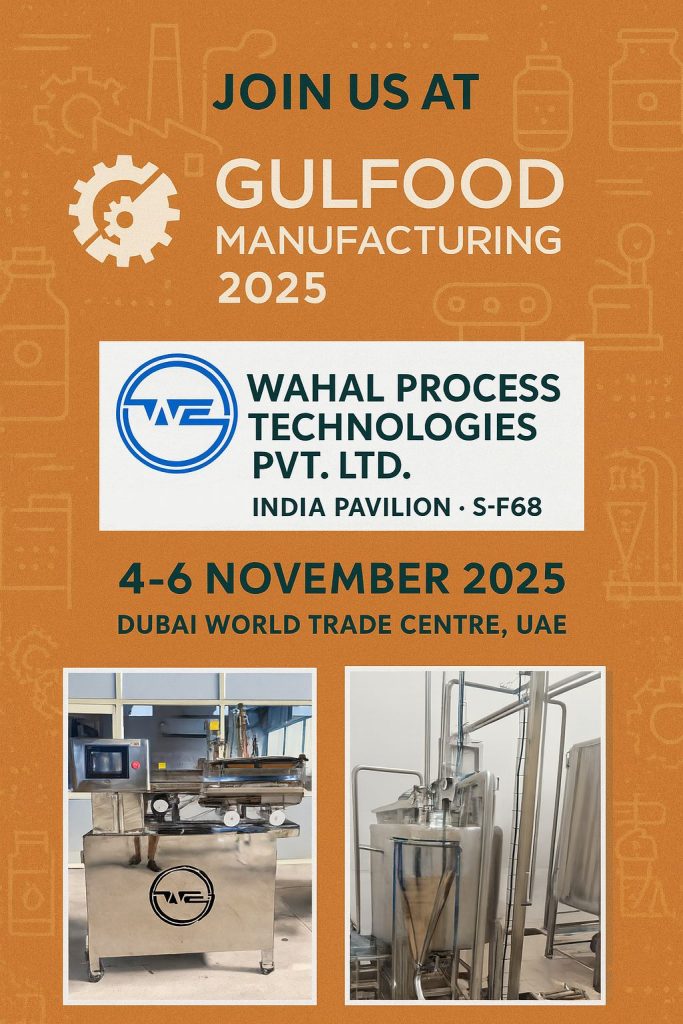Vacuum Mixing vs. Vacuum Cooking Systems – Which One Do You Need?
When scaling up industrial production in food, cosmetics, pharmaceuticals, or chemicals, the choice of the right processing equipment can make or break product quality. Two advanced technologies dominate modern manufacturing plants: Vacuum Mixing Systems and Vacuum Cooking Systems.
Both offer unique advantages, but they serve slightly different purposes. In this article, we’ll explain the differences, applications, and benefits of each so you can decide which system is best for your process.
What is a Vacuum Mixing System?
A Vacuum Mixing System combines homogenization, blending, and deaeration inside a sealed vacuum vessel. The vacuum environment ensures bubble-free products while preventing oxidation and improving shelf life.
Key Functions of a Vacuum Mixer:
Homogeneous mixing of powders and liquids
Elimination of air bubbles (deaeration)
High-shear homogenization for emulsions and dispersions
Suitable for high-viscosity materials (up to 100,000 cps)
Industries Served:
Food: sauces, protein drinks, dressings
Cosmetics: creams, lotions, gels
Pharma: ointments, syrups, suspensions
Paints & Chemicals: adhesives, varnishes, dispersions
Learn more about our Vacuum Mixing Systems.
What is a Vacuum Cooking System?
A Vacuum Cooking System combines heating, mixing, and vacuum processing to cook products at reduced temperatures. Since vacuum lowers the boiling point, heat-sensitive products can be processed faster and at gentler conditions.
Key Functions of a Vacuum Cooker:
Rapid heating & concentration under vacuum
Cooking without burning or caramelization
Preservation of flavor, color, and active ingredients
Ideal for temperature-sensitive or sticky products
Industries Served:
Food: jams, jellies, confectionery syrups, sauces
Cosmetics: wax-based creams, balms, emulsions
Pharma: herbal extracts, nutraceutical blends
Chemicals: adhesives, specialty resins
👉 Explore our Vacuum Cooking Systems.
Key Differences Between Vacuum Mixing and Cooking Systems
Feature Vacuum Mixing System Vacuum Cooking System
Primary Function Homogenization & deaeration Heating & cooking under vacuum
Process Focus Bubble-free blending & uniform consistency Faster cooking, flavor & nutrient retention
Viscosity Handling Very high (up to 100,000 cps) Medium to high (sticky/heated products)
Heating Requirement Optional (jacketed for warm/cool mixing) Essential (steam, thermal oil, or electric)
Applications Creams, sauces, adhesives, syrups Jams, caramel, herbal extracts, wax formulations
When to Choose a Vacuum Mixer
Choose a Vacuum Mixing System if your process requires:
Perfectly homogeneous mixing of liquids/powders
Stable emulsions without air incorporation
Processing of high-viscosity formulations
Long shelf life and oxidation-free environment
Examples: mayonnaise production, cosmetic creams, pharmaceutical gels.
When to Choose a Vacuum Cooker
Choose a Vacuum Cooking System if your process requires:
Cooking at lower temperatures to preserve flavor/actives
Fast batch times with reduced energy consumption
Gentle heating without scorching or caramelization
Production of sticky or heat-sensitive products
Examples: jam manufacturing, syrup concentration, cosmetic wax emulsions.
Do You Need Both?
In many modern plants, Vacuum Mixing and Cooking Systems are used together. For example:
A Vacuum Cooker prepares a syrup base (food, pharma, or chemical).
The cooked syrup is then transferred to a Vacuum Mixer for homogenization and deaeration with powders, flavors, or active ingredients.
This combination ensures process flexibility, scalability, and consistent quality across batches.
Why Wahal Engineers?
At Wahal Engineers, we specialize in turnkey solutions for mixing, cooking, and homogenization. With over 35 years of engineering experience, our equipment is trusted globally in food, cosmetics, pharma, paint, and chemical industries.
Custom designs from 100 liters to 20,000 liters
Jacketed vacuum vessels for heating & cooling
Automation (PLC/HMI) with recipe management
CIP/SIP cleaning options for hygiene-critical industries
Global service network and strong after-sales support
Both Vacuum Mixing Systems and Vacuum Cooking Systems play critical roles in modern process engineering. The right choice depends on whether your application demands homogenization and deaeration (Vacuum Mixer) or fast, gentle heating and concentration (Vacuum Cooker).
In many cases, a combination of both technologies offers the best results for efficiency, quality, and scalability.
Contact Wahal Engineers today to discuss your application and get expert guidance on the ideal solution for your plant.


